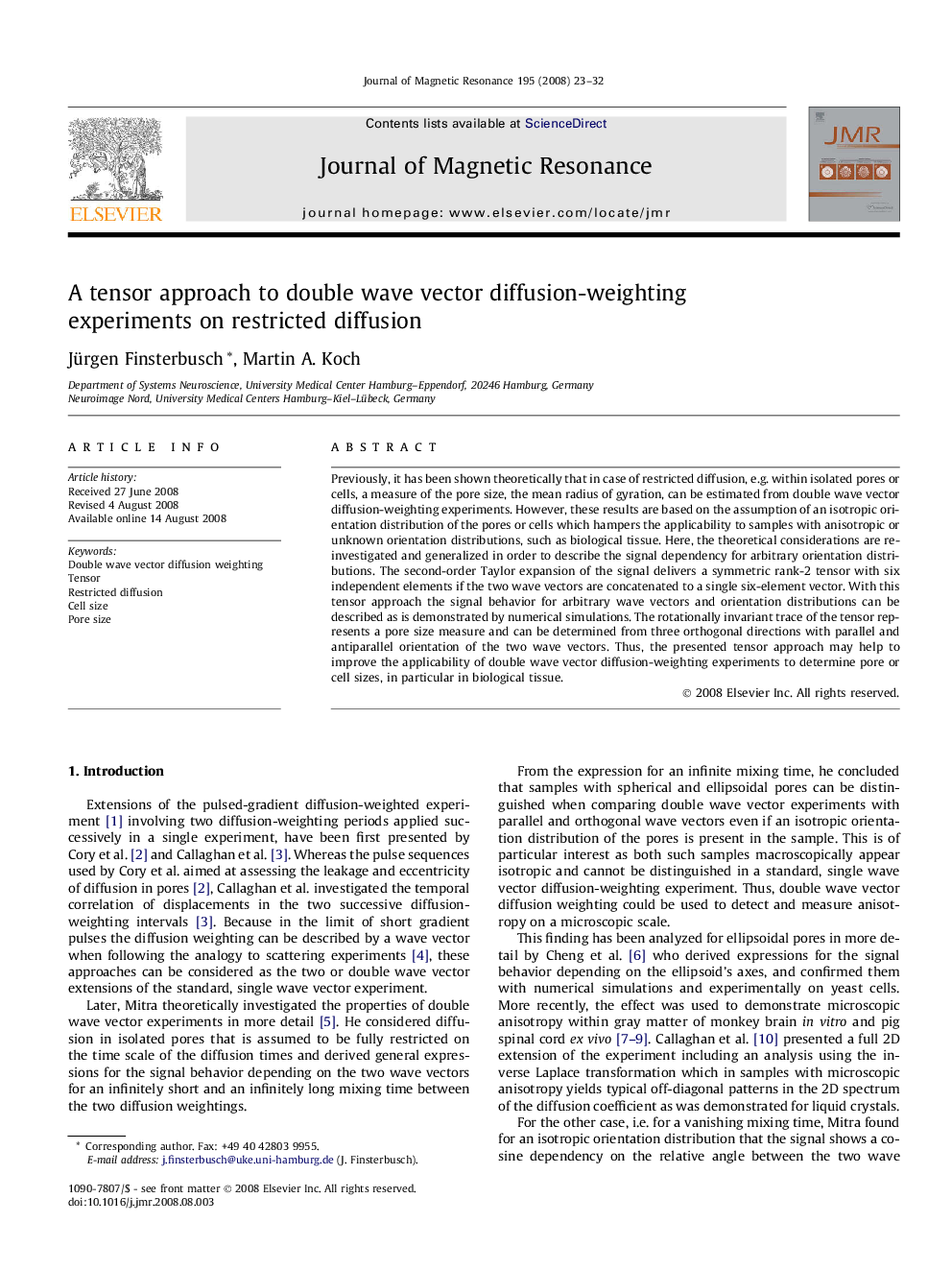| Article ID | Journal | Published Year | Pages | File Type |
|---|---|---|---|---|
| 5407085 | Journal of Magnetic Resonance | 2008 | 10 Pages |
Abstract
Previously, it has been shown theoretically that in case of restricted diffusion, e.g. within isolated pores or cells, a measure of the pore size, the mean radius of gyration, can be estimated from double wave vector diffusion-weighting experiments. However, these results are based on the assumption of an isotropic orientation distribution of the pores or cells which hampers the applicability to samples with anisotropic or unknown orientation distributions, such as biological tissue. Here, the theoretical considerations are re-investigated and generalized in order to describe the signal dependency for arbitrary orientation distributions. The second-order Taylor expansion of the signal delivers a symmetric rank-2 tensor with six independent elements if the two wave vectors are concatenated to a single six-element vector. With this tensor approach the signal behavior for arbitrary wave vectors and orientation distributions can be described as is demonstrated by numerical simulations. The rotationally invariant trace of the tensor represents a pore size measure and can be determined from three orthogonal directions with parallel and antiparallel orientation of the two wave vectors. Thus, the presented tensor approach may help to improve the applicability of double wave vector diffusion-weighting experiments to determine pore or cell sizes, in particular in biological tissue.
Related Topics
Physical Sciences and Engineering
Chemistry
Physical and Theoretical Chemistry
Authors
Jürgen Finsterbusch, Martin A. Koch,
